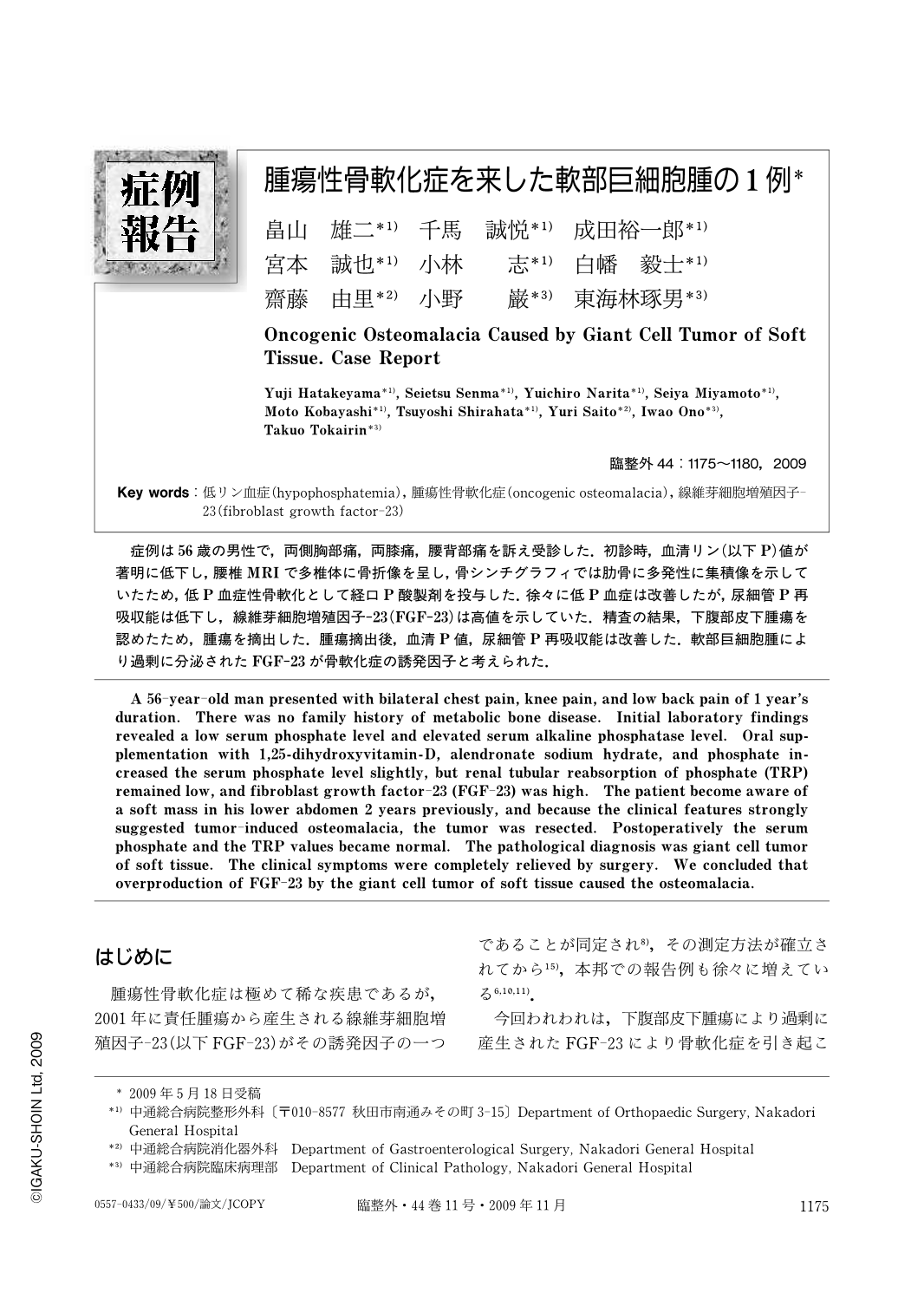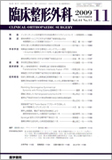Japanese
English
- 有料閲覧
- Abstract 文献概要
- 1ページ目 Look Inside
- 参考文献 Reference
症例は56歳の男性で,両側胸部痛,両膝痛,腰背部痛を訴え受診した.初診時,血清リン(以下P)値が著明に低下し,腰椎MRIで多椎体に骨折像を呈し,骨シンチグラフィでは肋骨に多発性に集積像を示していたため,低P血症性骨軟化として経口P酸製剤を投与した.徐々に低P血症は改善したが,尿細管P再吸収能は低下し,線維芽細胞増殖因子-23(FGF-23)は高値を示していた.精査の結果,下腹部皮下腫瘍を認めたため,腫瘍を摘出した.腫瘍摘出後,血清P値,尿細管P再吸収能は改善した.軟部巨細胞腫により過剰に分泌されたFGF-23が骨軟化症の誘発因子と考えられた.
A 56-year-old man presented with bilateral chest pain, knee pain, and low back pain of 1 year's duration. There was no family history of metabolic bone disease. Initial laboratory findings revealed a low serum phosphate level and elevated serum alkaline phosphatase level. Oral supplementation with 1,25-dihydroxyvitamin-D, alendronate sodium hydrate, and phosphate increased the serum phosphate level slightly, but renal tubular reabsorption of phosphate (TRP) remained low, and fibroblast growth factor-23 (FGF-23) was high. The patient become aware of a soft mass in his lower abdomen 2 years previously, and because the clinical features strongly suggested tumor-induced osteomalacia, the tumor was resected. Postoperatively the serum phosphate and the TRP values became normal. The pathological diagnosis was giant cell tumor of soft tissue. The clinical symptoms were completely relieved by surgery. We concluded that overproduction of FGF-23 by the giant cell tumor of soft tissue caused the osteomalacia.

Copyright © 2009, Igaku-Shoin Ltd. All rights reserved.


